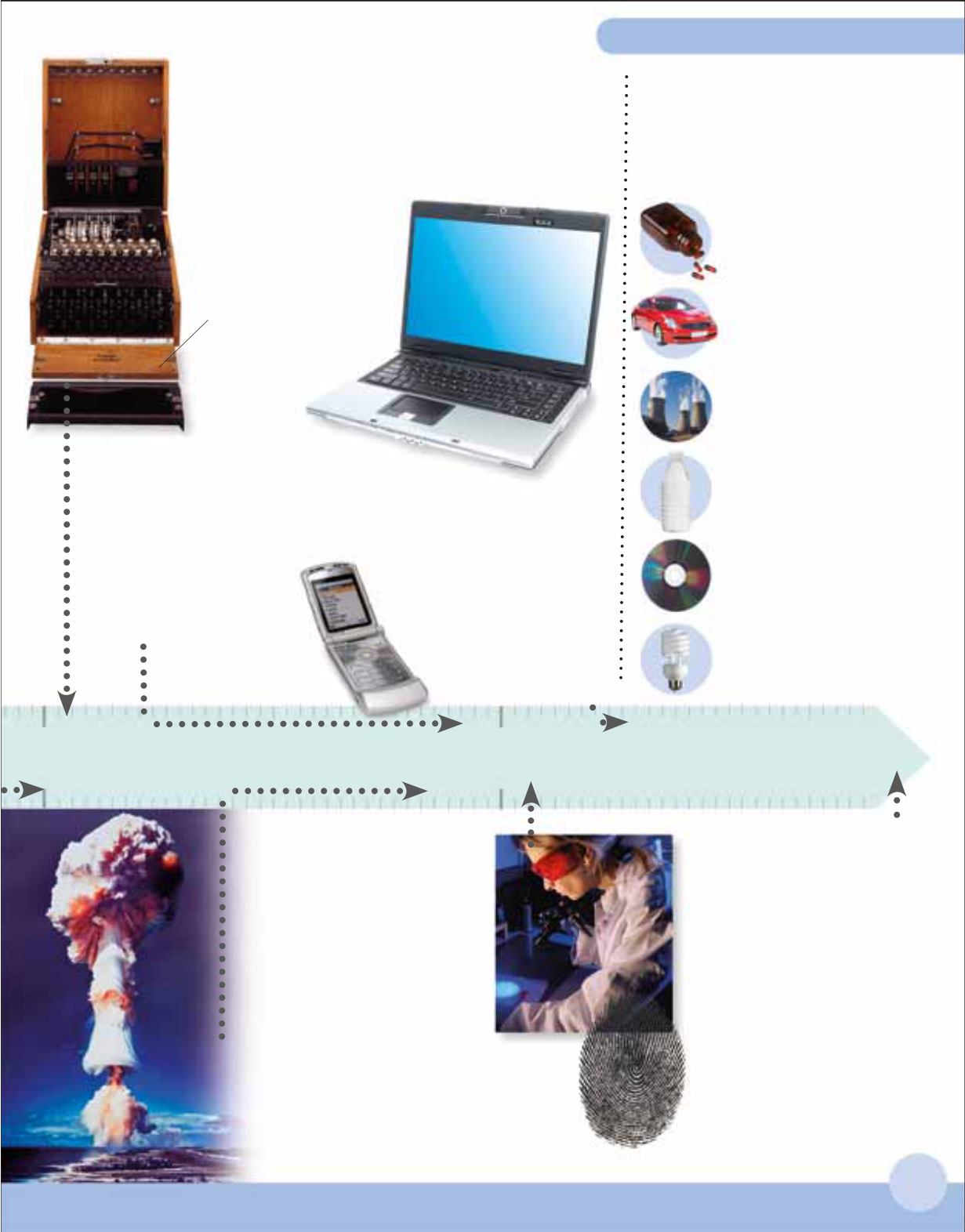
Advances in science
Clarence Birdseye, in 1924.
Modern inventions
Imagine the world
without these fantastic
inventions:
Alan Turing (1912–1954)
During the Second World
War, Alan Turing, a
brilliant mathematician,
helped develop code-
breaking machines
that eventually led
to the invention of
modern computers.
1900
Today’s computers
are lightweight and
portable – early
models filled
whole rooms.
The English used the
Enigma machine to
break German codes
during World War II
(sometimes known
as WWII).
217
Antibiotics
The first
antibiotic, penicillin, was
discovered accidentally.
Nuclear power
is
efficient, but some people
think it could harm us.
Plastics technology
is
used to make many of
the things in your home.
Compact disks
are small
and light, and they store
lots of information.
Cars
Some of the early
models were driven by
coal or wood-fired engines.
Energy-efficient light
bulbs
help save energy
in your home.
DNA discovered (1953)
The identification of DNA
(which holds information
in human cells) led to DNA
profiling, a huge help to
the police – criminals can
now be identified by a
single hair or spot of blood.
Mobile phones (1980s)
Developed from the two-
way radios of the 40s
and 50s, the first mobiles
were large and heavy,
weighing about 35 kg
(77 lbs) – the same as
a 10-year-old child.
Computers (1941)
The first computers
were huge machines.
They couldn’t cope with
complicated tasks,
but worked on only
one thing at a time.
Nuclear bombs (1945)
Sometimes science creates monsters,
like the bombs the USA dropped on
Japan in WWII. They killed nearly
300,000 people and ended the war.
Before DNA profiling, police identified
criminals by their fingerprints. This
system was developed in the 1890s.
Mobile phone
The internet (1990s)
With its roots in the
1960s, the Internet
(short for International
Network) became public
during the mid 90s, and
is now used for fun and
education by about 1.5
billion people.


